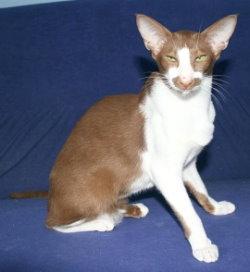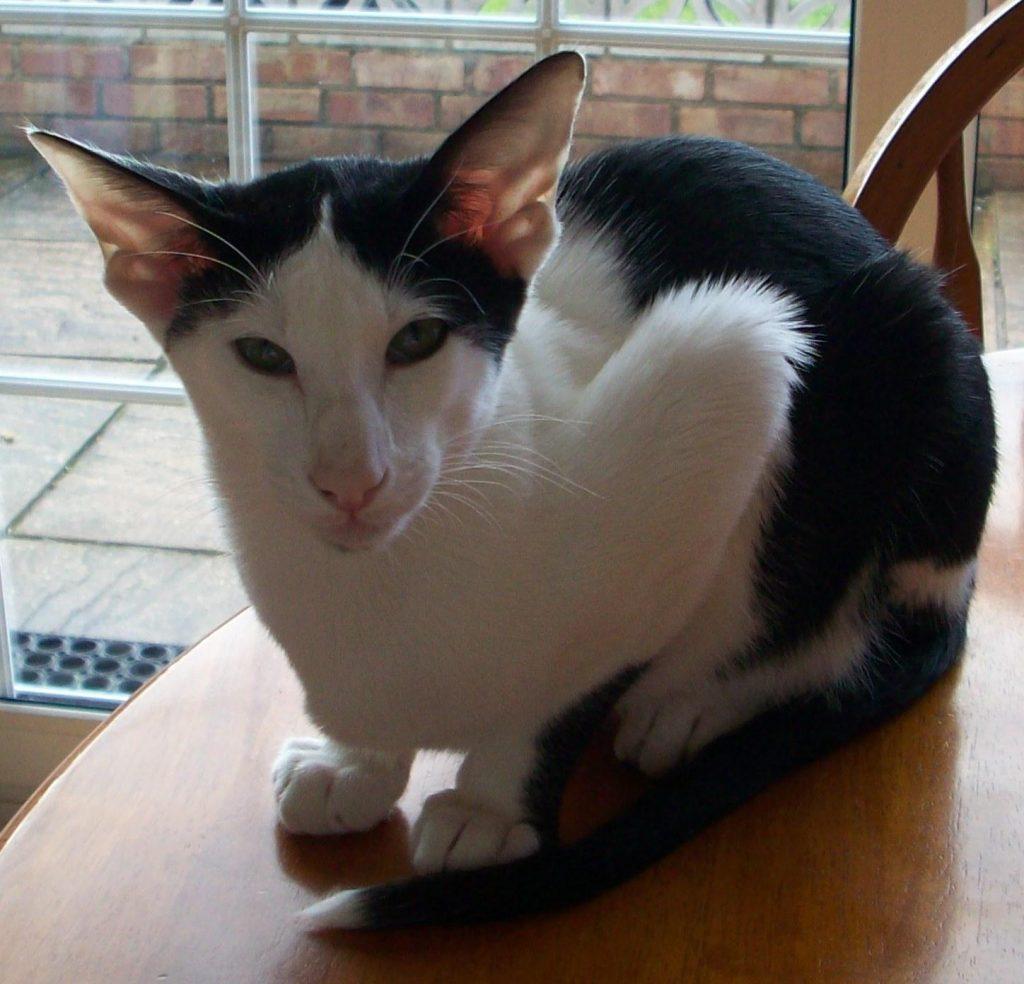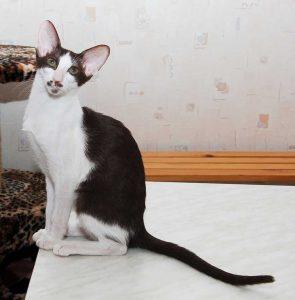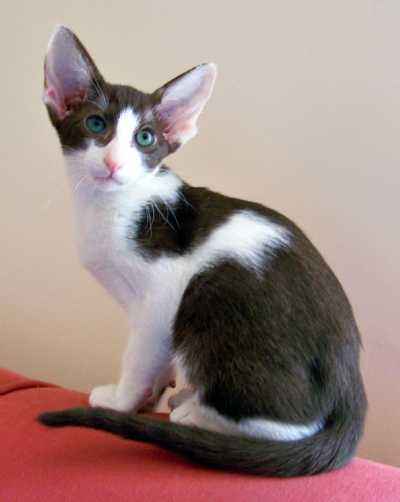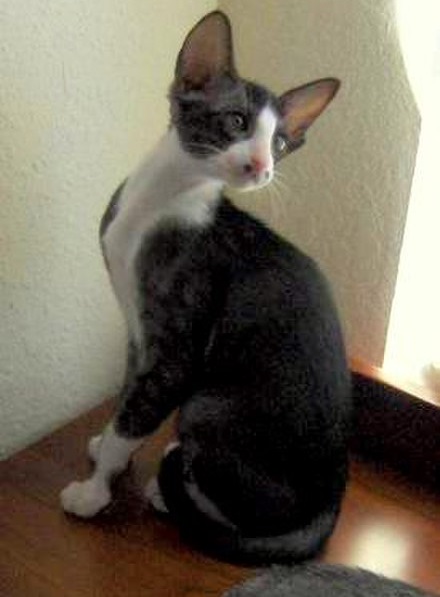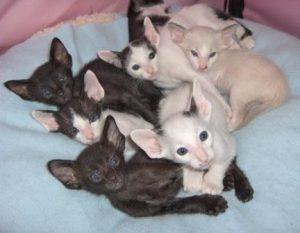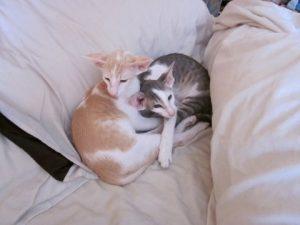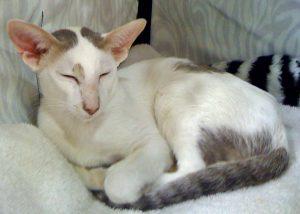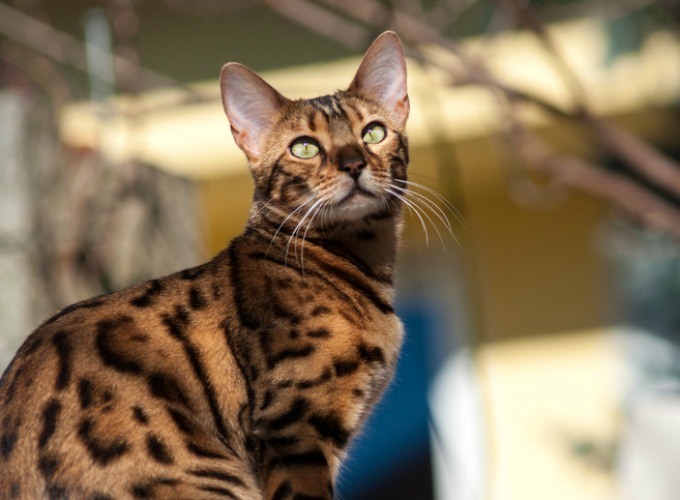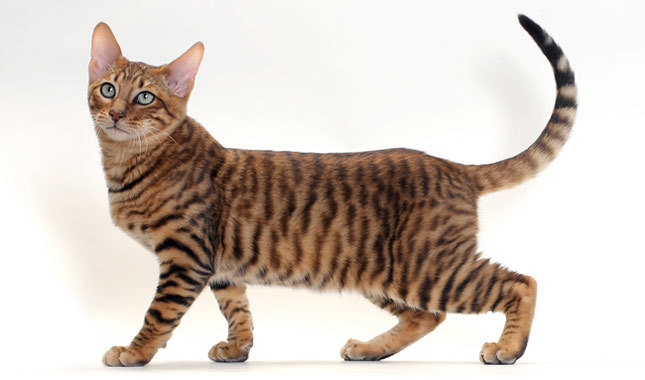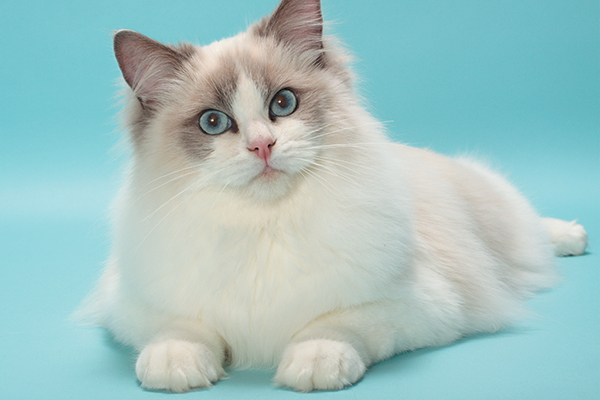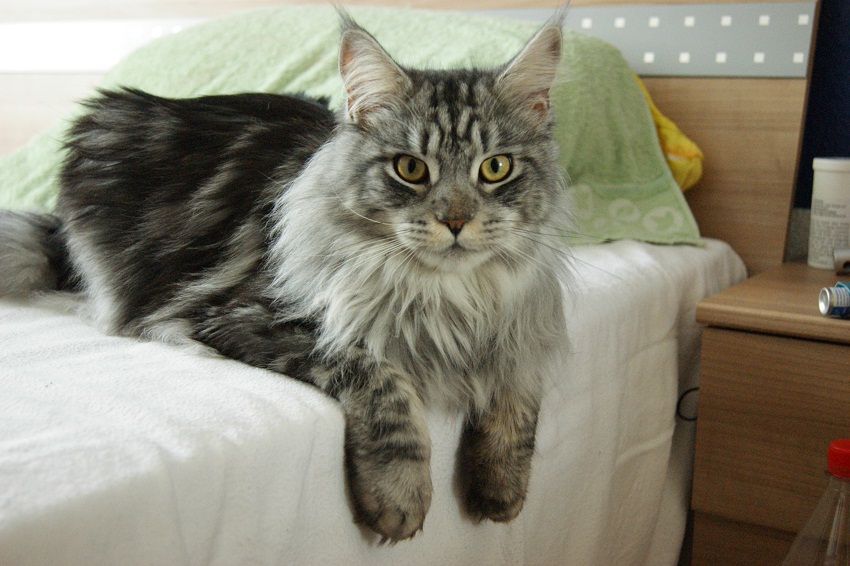The Oriental Bicolor is a domestic breed of cat with a lean body having either a shorthaired or a longhaired coat, and narrow whip-like tail. Its triangle-shaped head with a straight outline has large ears and green eyes, the only exception being the colorpoint variety that has blue eyes. Its most distinctive trait is the white spotting, which is distributed randomly covering more than one-third of its body. In general, the white spotting appears more on the Oriental Bicolor’s legs and underside than their back.
Quick Information
Physical Appearance & Size
| Weight: | 3.6-5.4 kg |
| Height (Size): | Small to medium |
Colors & Patterns
| Coat: | Shorthaired: close-lying, silky, straight with undercoatLonghaired: fine, glossy, flat-lying, without undercoat |
| Color: | Cinnamon, chestnut, fawn, platinum, brown, cream, red, blue, white, ebony, chocolate, champagne, lavender |
| Coat Pattern: | Colorpoint |
Other Characteristics
| Group of Breed: | Domestic |
| Lifespan (Life Expectancy): | 8-12 years |
| Personality Traits: | Interactive, intelligent, social, loyal |
| Lap Cat: | No |
| Shedding: | Minimal |
| Good with children: | Yes |
| Vocalization (Noise): | Frequent |
| Hypoallergenic: | Yes |
| Country of Origin: | USA |
| Competitive Registration/Qualification Information: | GCCF |
History and Origin
Even though experimental mating was carried out in the UK in the ’70s as well as the ’80s, today’s Oriental Bicolors originated as a result of the breeding program started by a US breeder Lindajean Grillo back in 1979. The best offspring produced by crossing a Bicolor American Shorthair and a Siamese was chosen to be bred with the Orientals or the Siamese. In 1983, this variety was recognized by the TICA.
The breeders from Europe, mainly those in the Netherlands and France, started producing Oriental Bicolor cats during the 1980s. Initially, they used a female red and white Moroccan street cat for crossing, but later a Cornish Rex and some cats from the US were used in the mating.
The male black and white Tassam Tom was the first Oriental Bicolor that was brought to the UK in 2004. In 2006, the breed received the Preliminary Status from the GCCF and then in 2008 it gained the Provisional recognition.
Temperament and Behavior
These cats can quickly adapt to their surroundings when taken to a new place. The lovable, social, and friendly Oriental Bicolors crave human attention and make a great companion for their owners. They love to snuggle up, often seen clinging to their owners, especially after a day out.
Being responsive by nature, they are suitable for those intending to spend quality time interacting with their pets. They are tolerant of the unfledged behavior of kids and do well with other household pets, including dogs. Although they have a frisky, lively, and playful disposition, these Oriental cats do not always demand playful interaction.
Care
Both the coat types (short and long) need minimal care and maintenance. As a minimal shedder, it requires light brushing with a soft-bristle brush or a stainless steel comb once or twice every two weeks. This will help in removing all its loose or dead hairs. Also, use a soft cotton cloth to wipe its coat gently. Check its eyes and ears frequently and clean them if needed.
Some common health concerns in this breed include respiratory disorders such as asthma and feline bronchitis, gastrointestinal conditions like megaesophagus, congenital heart diseases like aortic stenosis, and crossed eyes. It is recommended that you immunize your pet against feline leukemia as well as feline enteritis and flu virus.
Since it is an energetic, agile, and athletic breed, it likes to keep itself busy and engaged in activities. While playing sessions with puzzle toys will help to stimulate its brain, cat trees and teaser toys will satisfy your pet’s climbing, running, and jumping instincts. Make sure that you spend at least 10-15 minutes involved with your Oriental cat 2-3 times a day.
Training
There is no exclusive training method that should be adopted for your Oriental cat. Like most breeds, proper housebreaking and obedience training will help the kittens learn the basic rules of living in a human family.
Feeding
Raw meat as a primary source of protein can be included in your cat’s diet. You can also provide commercial cat foods including dry kibble. Fresh vegetables and fruits such as cantaloupe, corn, or broccoli make good treats but make sure that you offer them occasionally.
Interesting Facts
- The first cat (bred by Lindajean Grillo) to gain the Champion Status from TICA was Ciara Quite-N-Oreo.

